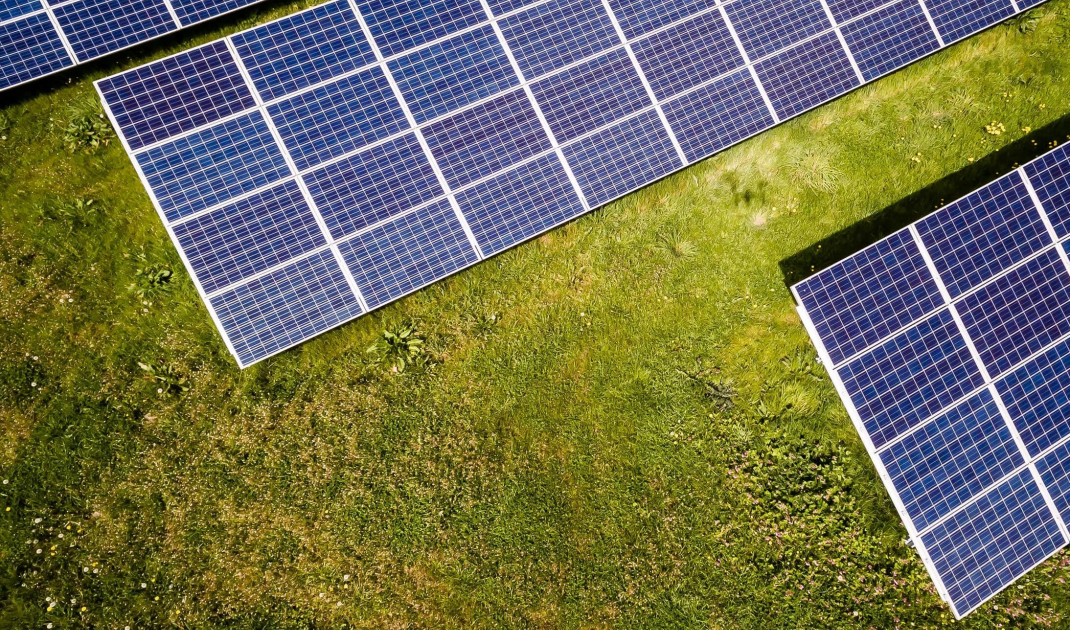Rising heating prices and a turn to renewable energy sources are causing more and more people to bet on photovoltaics.
Photovoltaics are a good choice for single-family homes
Photo by Bill Mead © UNSPLASH
Advantages of photovoltaics
First of all, photovoltaics are an environmentally friendly choice. Energy here is obtained from the sun, i.e. from a renewable source. Its production does not emit any unpleasant odors or harmful fumes. In addition, photovoltaics means savings. Until a few years ago, panels were very expensive. However, with the passage of time, the cost of obtaining solar energy is decreasing. Moreover, it is a long-term solution. The lifespan of photovoltaics is about 25 years. After that time, the panel's real power output can drop to 80%. In addition, photovoltaics are virtually self-maintenance. The panels only require cleaning once a year. Many people think that due to the changeable weather in Poland, installing photovoltaics will not work. This is untrue. There are about a thousand hours of sunshine per year in our country. This is enough to meet the needs of an average household. In addition, photovoltaic panels are capable of generating energy also on cloudy days, although then their power output decreases a little. Poland has almost the same sunshine conditions as Germany, a country where photovoltaics are very popular.
Photovoltaics placed on the roof of a building
Photo: Benjamin Jopen | Vivint Solar © UNSPLASH
Heating with photovoltaic panels
Photovoltaics are now so accessible that it is becoming increasingly popular to use them for whole-house heating. This is a particularly attractive solution for owners of detached houses who do not have the possibility to connect to the municipal heating network. In this case, heating with photovoltaics will provide tangible savings. It also gives a sense of self-sufficiency. It is not necessary to invest additionally in fuel, gas or other fuels, the prices of which fluctuate rapidly. In addition, photovoltaics can be combined with underfloor heating or heating mats. Depending on the specific situation, photovoltaics can either fully replace a previously used solution or become a power source for an existing device. Even a standard heating system on electricity can easily be powered by electricity produced by a photovoltaic system. It is best to combine the energy from photovoltaic panels with a heat pump. Then the need for electricity is at least three times less, because the heat pump does not heat with electricity, but uses it to extract heat energy from the environment.
Photovoltaics are environmentally friendly
Photo by Andres Siimon © UNSPLASH
Changes in billing
Previously, photovoltaics were billed using net-metering. It consisted of returning the excess energy produced to the system. No money was received for this, but during the winter months it was possible to collect 80% of the energy previously given back to the system. The system consisted of billing prosumers producing energy in installations up to 10 kWp at a ratio of 1 to 0.8. For one unit of energy fed into the grid, 0.8 could be collected for free. For larger installations, the ratio was 1 to 0.7. From July 1, 2022 to June 30, 2024, the net-billing model is in place. Energy is billed according to the market monthly price. Selling energy is billed at the wholesale price, but buying it, at the higher, retail price The introduction of such a time frame is due to the need to adapt to the new system, which will come into effect from July 1, 2024. At that time, energy will be billed at the hourly price. This will be the target billing system based on separate billing of energy injected into and withdrawn from the grid. The value of energy injected into the grid will be determined according to the hourly exchange price in the day-ahead markets. Determination of these prices will be the responsibility of the energy information market operator. For prosumers covered by the new system, distribution fees will be 100% borne by them.
Photovoltaic panels have a long lifespan
Photo Flash Dantz © UNSPLASH
Does photovoltaics still pay off after the regulatory changes?
As much as possible. Many people are concerned that photovoltaic installation is now unprofitable. However, the increase in energy prices has offset the adverse effects of the changes. Buying back the energy you generate at a higher price is still cheaper than relying on energy distributors year-round. Especially now that energy prices are highly volatile and constantly rising. The payback period for a home photovoltaic system depends on many factors. However, it is worth remembering that it does not require any permits, as it does not exceed the statutory 50 kW. So it is enough to report its installation. For a single-family house, an installation consisting of 15 panels will be sufficient. They will generate 4.5 megawatt hours of energy. For a single-family home, this will be enough energy for the use of household appliances and heating. So far, such an investment would pay for itself after about 6 years. Now, this period will extend to 8. However, it is still a very cost-effective solution, because for the next several years we will benefit from free energy derived from the sun.
You can read more about heating here


































